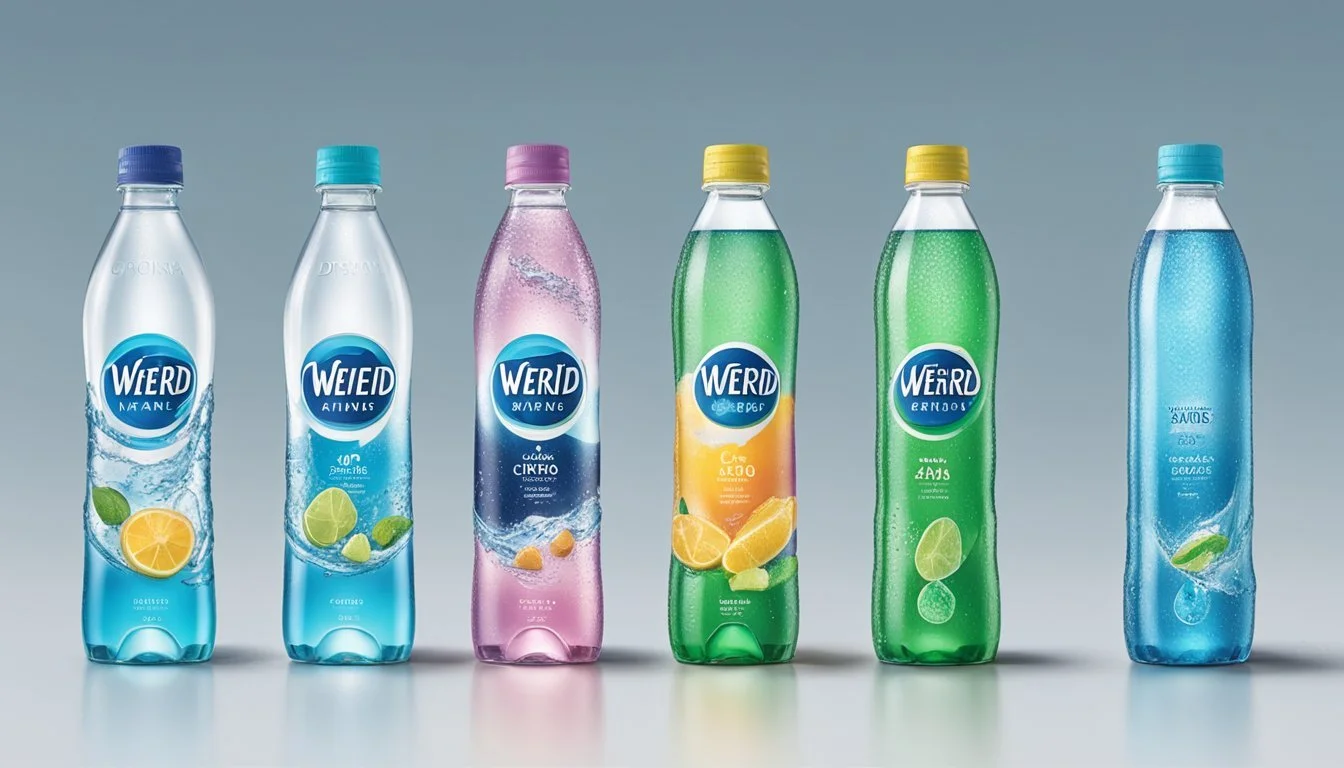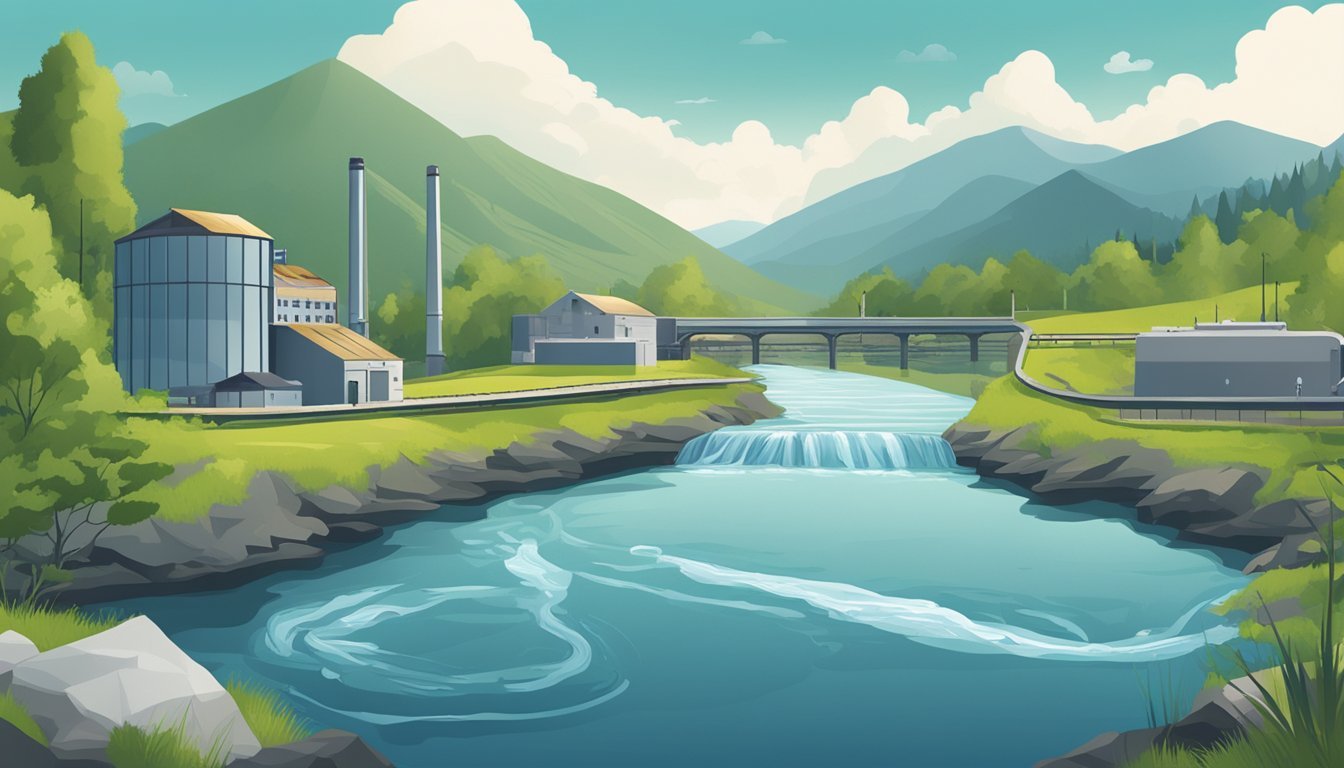Cirro vs. Weird Water
A Comprehensive Comparison of Bottled Water Brands
When choosing between Cirro and Weird Water, discerning the better option requires an understanding of subtle differences in their taste, source, and overall quality. Cirro boasts a natural mineral balance with a light, refreshing taste drawn from pristine springs, making it a favorite among those who prefer pure, clean water. Weird Water, on the other hand, offers a unique flavor profile with added minerals and electrolytes designed for an active lifestyle.
For those prioritizing a pure, clean drinking experience, Cirro stands out as the superior choice. Its minimalistic approach focuses on delivering water that tastes close to nature. Meanwhile, Weird Water targets consumers looking for added health benefits and a bit more flavor complexity in their bottled water.
Both brands have their merits, appealing to different tastes and needs. Whether one prefers Cirro’s natural simplicity or Weird Water’s enhanced profile, the decision ultimately lies in personal preference.
Background on Bottled Water Brands: Cirro and Weird Water
Cirro and Weird Water are two prominent brands in the bottled water market.
Cirro is known for its commitment to providing pure and clean water. This brand sources its water from natural springs and ensures minimal processing to maintain a fresh taste. Cirro’s focus is on quality testing and transparency, often sharing detailed water quality reports with consumers.
Weird Water, on the other hand, adopts a unique approach. They emphasize eco-friendly practices by using recyclable materials for their bottles. Weird Water also sources water from springs but incorporates an additional filtration process to enhance the mineral content and taste.
Cirro’s Highlights:
Sourced from natural springs
Focus on transparency with water quality reports
Minimal processing to retain natural taste
Weird Water’s Highlights:
Eco-friendly packaging
Additional filtration for enhanced mineral content
Clear information on water sources
Even though both brands highlight their water’s purity, they are distinct in their methodologies and marketing strategies. Cirro tends to attract consumers who prioritize natural taste and transparency, while Weird Water appeals to those who are environmentally conscious and prefer water with a specific mineral profile.
Comparison Table:
Brand Source Highlights Target Consumers Cirro Natural springs Quality testing, minimal process Those seeking natural taste, transparency Weird Water Springs with filtration Eco-friendly, enhanced minerals Environmentally conscious, mineral enthusiasts
Understanding the background of these brands can help consumers make informed choices based on their preferences and values.
List of Section Names
Introduction
History and Background
Source and Purity
Taste and Flavor Profile
Ingredients and Mineral Content
Packaging and Environmental Impact
Convenience and Accessibility
Availability in Grocery Stores
Price Comparison
Consumer Perception
Health Benefits
Final Recommendation
Analyzing Water Quality and Safety
Cirro and Weird Water undergo rigorous processes to ensure their bottled water is both safe and high-quality. This section breaks down their chemical composition, filtration methods, and adherence to regulatory standards.
Chemical Composition and Contaminants
Many bottled water brands, including Cirro and Weird Water, are subject to various tests for potentially harmful chemicals like lead, PFAS, and endocrine-disrupting chemicals. According to Consumer Reports, some bottled waters may contain toxic PFAS chemicals, notably in carbonated variants. Evaluating pH levels is also essential, as the pH can influence the water's taste and safety.
Both brands maintain low levels of contaminants, but specific reports revealed traces of harmful substances in several brands. The presence of these contaminants underscores the need for continuous testing and transparency about what's in the bottle.
Filtration and Purification Processes
Filtration processes play a crucial role in determining the quality and safety of bottled water. Cirro uses advanced methods like reverse osmosis and carbon filters to remove pollutants and pathogens. Reverse osmosis is effective at eliminating a broad range of contaminants, providing high-quality filtered water.
Weird Water, on the other hand, employs ozone treatment to disinfect its water. While effective at killing microorganisms, ozone can increase the water's acidity. Both brands utilize rigorous filtration systems, but Cirro's use of reverse osmosis potentially offers a more comprehensive purification method.
Regulatory Standards Compliance
Adhering to regulatory standards is vital for bottled water safety. The FDA oversees bottled water, yet its staffing has sometimes been criticized for being insufficient. Both Cirro and Weird Water comply with FDA guidelines to ensure safe drinking water.
Meeting Environmental Protection Agency standards, which often govern public water supplies, is another layer of safety. By following stringent regulations and regular quality checks, both Cirro and Weird Water strive to provide clean, safe drinking water. Compliance with these regulations helps maintain the water's sanitary conditions and public trust.
Health and Environmental Considerations
Choosing between Cirro and Weird Water involves evaluating both health implications and their environmental impact. This section will cover critical considerations such as the use of plastic and the effects on human health.
Plastic Use and Environmental Impact
The production and disposal of plastic bottles used by Cirro and Weird Water significantly affect the environment. Plastic bottles contribute to landfills, where they can take hundreds of years to decompose. Microplastics from these bottles often find their way into oceans, adversely affecting marine life.
Producing plastic bottles requires substantial energy, and the transportation of bottled water adds to their carbon footprint. Using a reusable water bottle and filling it with filtered tap water can be a more sustainable choice.
Efforts to mitigate these impacts include the use of eco-friendly packaging and promoting recycling programs. Investing in water filters can also be a good alternative, reducing the reliance on bottled water and saving resources.
Health Implications of Water Choices
When considering health, both Cirro and Weird Water must meet safety standards set by the Environmental Protection Agency. However, bottled water is not immune to problems such as bacterial contamination and the presence of endocrine-disrupting chemicals from the plastic bottles.
Filtered tap water, on the other hand, is subject to regular monitoring and disinfection, reducing the risk of contamination. Some bottled waters, like alkaline waters, might claim health benefits, but these are not always backed by scientific evidence and can sometimes even lead to side effects like inflammation.
For children and other vulnerable populations, ensuring access to safe water is essential. Regularly investing in new water filters at home can provide a reliable source of clean water, often at a lower cost and without the added environmental burden.
Taste Profile and Consumer Preferences
When comparing Cirro and Weird Water, it is essential to consider their sensory profiles and how they align with consumer preferences in both their sparkling and still varieties.
Sensory Evaluation and Taste Tests
Both Cirro and Weird Water have undergone extensive sensory evaluations. In blind tastings, Cirro often receives high marks for its crisp, clean taste with a hint of minerality. Weird Water, known for its unique blend of electrolytes, presents a slightly smoother and more balanced flavor.
In various tests, Weird Water's electrolyte-enhanced formula has been noted for leaving a refreshing aftertaste. Consumers often describe its mouthfeel as soft yet invigorating. Cirro, in contrast, is praised for its pure, straightforward flavor, appealing to those who prefer minimal aftertaste.
Preference for Sparkling or Still Varieties
Consumer preferences between sparkling and still varieties show distinct trends. Cirro's sparkling version is lauded for its fine bubbles, offering a delicate effervescence without overwhelming the palate. Weird Water's sparkling variant, enhanced with subtle flavors, attracts those who enjoy a more robust sparkling experience.
Still water enthusiasts find Cirro's simplicity appealing, preferring its unaltered taste that hydrates without additional flavors. Weird Water’s still option, enriched with natural electrolytes, is favored by those seeking enhanced hydration with a smoother taste profile. Thus, the choice between Cirro and Weird Water often hinges on whether the consumer values purity or enhanced features.
Economic Factors in Bottled Water Consumption
Choosing between Cirro and Weird Water involves analyzing various economic factors. This includes assessing their cost-effectiveness, price comparisons, and the availability and accessibility of each brand in retail environments.
Cost-Effectiveness and Price Comparison
Cirro tends to price its products competitively, making it attractive for those seeking a cost-effective bottled water option. The price per bottle often falls within the mid-range, balancing affordability and quality.
Weird Water generally has a higher price tag, as it markets itself as a premium product. This brand focuses on unique aspects like enhanced mineral content, which can justify the higher cost for some consumers.
For individuals considering long-term costs, the price difference becomes apparent. Cirro’s moderately priced bottles are appealing for daily consumption, whereas Weird Water might be suitable for occasional indulgence. Comparing a case of Cirro to a case of Weird Water reveals that the latter often commands a premium.
However, both brands use plastic water bottles, which can influence purchasing decisions based on environmental considerations and potential additional costs for recycling.
Availability and Accessibility in Retail
Cirro is widely available in many grocery stores and convenience outlets. Its broad distribution network ensures that consumers can conveniently find it wherever they shop for beverages.
Weird Water, while also accessible, is often found in more specific types of retail stores. It is commonly seen in health food stores and specialty shops, focusing on areas where customers might seek cleaner, higher-end water options.
Both brands make strategic use of retail variety to cater to different market segments. Cirro’s pervasive presence in retail locations offers convenience and ease of access, whereas Weird Water’s availability in select stores appeals to a niche market willing to pay for perceived quality. The accessibility of both brands is crucial in determining their success and consumer preference.
Sustainable Choices and Alternatives
Choosing sustainable options for water consumption can significantly reduce environmental impact. Below, we explore the benefits of reusable bottles and home filtration systems, as well as the pros and cons of spring water versus purified tap water sources.
Reusable Bottles and Home Filtration Systems
Reusable water bottles provide an eco-friendly alternative to single-use plastic bottles. They minimize waste and often come in materials like glass or BPA-free plastic, reducing the long-term environmental footprint. Glass bottles with silicone sleeves, for instance, offer durability and safety while being dishwasher safe.
Home filtration systems, such as Brita or Hydros, use activated carbon or other media to remove contaminants from municipal water. These systems can provide clean, safe drinking water without the need for bottled water, cutting down on plastic waste and the energy input required for production and transportation.
Key Benefits:
Reduced waste.
Cost-effective over time.
Enhanced water quality through filtration.
Spring Water vs. Purified Tap Water Sources
Spring water and purified tap water each have their unique advantages. Spring water is typically sourced from natural underground springs and is often praised for its mineral content and taste. Brands like Mountain Valley offer high-quality spring water that is light and has a velvety texture.
Purified tap water, on the other hand, undergoes rigorous filtration and purification processes to remove impurities. It can be sourced from municipal water and still provide superior quality through advanced filtration techniques. This type of water is often cheaper and has a lower environmental impact compared to bottled spring water.
Key Points:
Spring Water: High mineral content, excellent taste.
Purified Water: Lower cost, environmentally friendly, highly purified through filtration.








